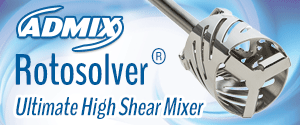Gold nanoparticles help detect Listeria cheaply
Scientists have developed a Listeria biosensor using gold nanoparticles, which they claim achieves rapid, cost-effective results and proves highly sensitive.
The innovation is detailed in the article ‘Gold nanoparticle-modified carbon electrode biosensor for the detection of Listeria monocytogenes’, published in the US journal Industrial Biotechnology.
“The objective of the study was to develop an enzyme-linked immunosorbent assay (ELISA)-based biosensing strip to use for quick and inexpensive detection of L. monocytogenes through AuNP [gold nanoparticle]-modified SPCE [screen-printed carbon electrodes],” the authors state.
Inexpensive
SPCE strips as disposable amperometric biosensors are inexpensive, portable, easy to handle and have great potential for L. monocytogenes detection, they claim.
The detection of bacteria using SPCE strips involves a transducer that translates a biochemical reaction, such as substrate oxidation leading to the emission of electrons, into a measurable response.
The researchers claim that SPC E strips can be augmented with gold nanoparticles. These have the ability to strengthen detection signals, improve the electron transducer and boost detection sensitivity, enabling them to
pinpoint smaller quantities of L. monocytogenes in products.
This is especially important in regions such as the US, which have a zero tolerance policy towards L.monocytogenes in foods.
‘More surface area’
“Metallic nanoparticles are useful in immunoassays, because … they provide more surface area on which antibodies can immobilise and capture target bacteria,” the study states.
“While the gold film aids in conductivity, it is the NPs that increase the surface area and provide higher antibody immobilization.”
An SPC E strip using gold nanoparticles could detect as little as one bacterial cell of L. monocytogenes, according to the researchers.
“This is a rapid and efficient biosensor as it only takes approximately one hour for the accurate detection of contamination,” they conclude. “This sensor has the potential to be commercialised and it would be extremely beneficial in the food industry as it is inexpensive and portable.”

































